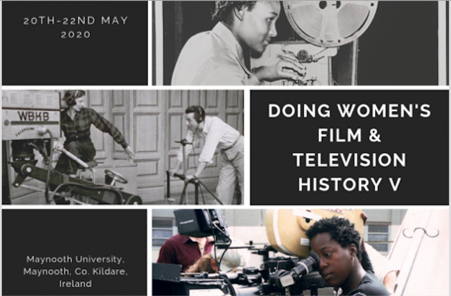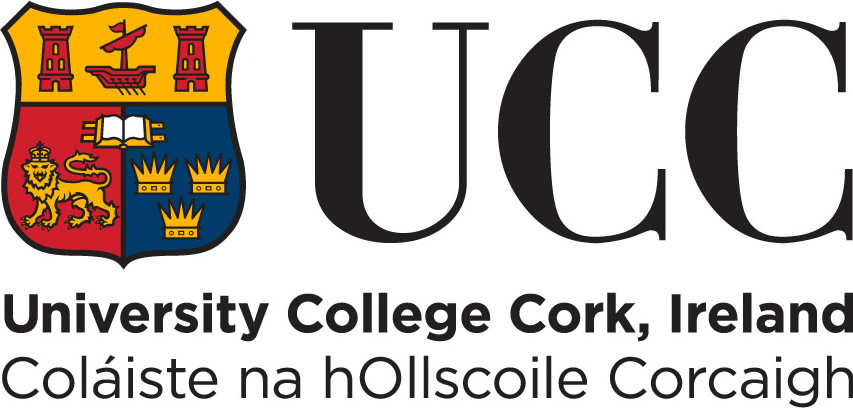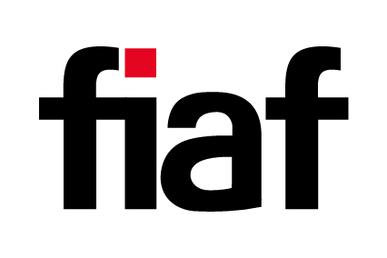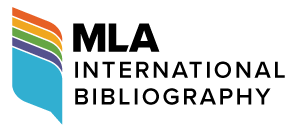Doing Women’s Film & Television History: Locating Women in Film and Television, Past and Present
Editorial
Sarah Arnold and Anne O’Brien

Figure 1: Announcement of the 2020 Doing Women’s Film & Television History conference
on the conference website.
The scholarship collected in this issue of Alphaville represents a selection of the research that was to be presented at the 2020 Doing Women’s Film & Television History conference, which was one of the many events cancelled as a result of the Covid-19 pandemic. The pandemic itself greatly impeded academic life and our capacity to carry out and share research among colleagues, students and the public. Covid-19 was even more problematic for women, who shouldered a disproportionate care burden throughout the pandemic. Therefore, we are particularly delighted to be able to present an issue that addresses a number of topics and themes related to the study of women in film and television, including, but not limited to, the production and use of archival collections for the study of women’s film and television histories; the foregrounding of women in Irish film and television histories; women’s productions and representation in films of the Middle East; representations of sex and sexuality in television drama; and women’s work and labour in film and television. The breadth of the themes covered here is indicative of the many ways in which scholars seek to produce, describe and uncover the histories and practices of women in these media. They suggest opportunities for drawing attention to women’s work, whether that is labouring in the film and television industries or the work that women’s images are put to do on screen. Collectively, the articles contained in this issue point to a multitude of opportunities for doing and producing women’s film and television histories, either as they occurred in the past or as they materialise in the present. They offer correctives to absences and marginalisation in production histories, in archiving or preservation, and in representation.
Indeed, the representation of women continues to inform much scholarship on women in film and television, perhaps enhanced by the attention paid to their visibility on screen by institutions such as the Geena Davis Institute on Gender in Media or the Centre for the Study of Women in in Television and Film (San Diego State University). However, this research exists in tandem with “the endurance of gendered stereotyping, even as more contemporary renditions of women and femininity are finally providing a little more diversity in the media landscape” (Byerly and Ross 7). Representation is, therefore, an ongoing concern for scholars, including the contributors to this issue, who seek to understand the ways in which film and television texts are productive of gender and the ways they engage in the circulation of articulations of what it means to be a woman (McCabe; Brunsdon and Spigel 5–8). Although such feminist screen scholarship focuses on a well-trodden path of textual analysis of gender representations, it nonetheless produces a valuable assessment of how screen cultures collectively situate women. Indeed, as the articles by Aviva Dove-Viebahn and Dilyana Mincheva demonstrate, progressive and meaningful representations of women on screen are facilitated by, and often dependent upon, women’s vital roles as filmmakers and fans. The presence of women in the extratextual worlds of production and consumption helps to offer a corrective to stereotypical representations or the absence of women on screen.
Absence, to which this issue’s dossier on “Archival Opportunities and Absences in Women’s Film and Television Histories” speaks, is one of the challenges that the authors here and elsewhere must contend with and address when researching women, film and television. This absence has been scrutinised when not only existing histories but histories in-production (through archiving and preservation, for example) have been criticised for their blindness to inequality of representation (Gaines; Moseley and Wheatley; Callahan; Gledhill and Knight). Rachel Moseley and Helen Wheatley have, for example, pointed to the challenges of undertaking historical research (in their case, female audiences of British television), when archives themselves are already engaged in processes of exclusion and marginalisation (154–55). This results in an absence from historical record that obscures the presence of women in this history since, as Erin Hill suggests, women’s contributions to historical media were often undervalued and rendered invisible by work cultures that deemed women’s work not worth remembering (5). This extends also to women as audiences and fans, as Agata Frymus and E. Charlotte Stevens both discuss in this issue. Researchers are, therefore, tasked with developing methods and approaches for dealing with existing materials, archives and records and must “look beyond the resources of the ‘classic’ state-sponsored/national archive to the materials of oral history, the novel, newspapers, magazines and other sources” to bring women back into view (Ball and Bell 551). Such methods and approaches are detailed in the dossier as well as in articles by Frances C. Galt, Veronica Johnson, Lorena Cervera Ferrer and Morgan Wait contained in this issue.
Research on women’s labour and production work also benefits from methodological approaches attuned to the ways that gender informs working cultures and practices, and those approaches uncover the ways in which such work and experiences are gendered. Shelley Cobb and Linda Ruth Williams’s Calling the Shots: Women and Contemporary Film Culture in the UK project (2000–2015), for example, turned to interviews and oral histories in order to generate new research materials that would highlight women’s presence in British film and television histories as well as producing contemporary narratives from which future researchers can draw (Cobb and Williams 891–2). The articles in this issue that focus on women’s work in film and television production privilege first-person accounts in uncovering how women negotiate media work and manage labour spheres that are male-dominated and exclusionary. Here, interviews provide a crucial means of accessing knowledge that might be excluded from official records and documents (Sandon). The stories these researchers detail and the narratives provided by the interviewees reveal a crucial counterpoint to current trends in diversity and inclusion policies that may give the impression of commitment to gender equality. Indeed, the use of interviews and other first-person narratives has not only allowed researchers to include women in production research but has also evidenced the sheer extent of gender discrimination, inequality of access and undervaluing of women’s work as well as the strategies that women adopt to address these (Wreyford; O’Brien, “Men” and Women; Berridge). The articles published in this issue demonstrate innovative ways of understanding and representing interviews and first-hand accounts. Cervera’s documentary on the women of Colombian film collective Cine Mujer, for example, draws attention not only to the films they produced but also offers a useful corrective to dominant auteurist histories that privilege men. Rowan Aust foregrounds the methodological utility of her industry insider status and the ways in which she could operationalise it in order to access more intimate and confessional narratives. First-hand stories by women offer, therefore, a necessary contextual layer to institutional narratives of production and media work.
In this issue, then, we gather a collection of work that evidences and accounts for the variety of critical and methodological work on women in film and television. While recurring themes of marginalisation, exclusion and discrimination appear in many of the articles, the authors here are also conscious of the strategies that can be developed to highlight and address inequality.
Women in Irish Film & Television History
The theme of archival absences frames the Irish contributions to the issue, which explore underrepresented and obscured histories of women in Irish film and television history. In her role as Head of the Irish Film Archive (IFA) at the Irish Film Institute (IFI), Kasandra O’Connell has experienced first-hand the challenges of uncovering and disseminating women’s filmmaking contributions. O’Connell accounts for the interrelation between women’s marginalisation in the Irish arts and creative industries, and the dearth of women’s film collections in the archives. Although she sees some progress in the inclusion of women in the archives, O’Connell is cautious to advocate for persistent and ongoing efforts to develop women’s filmmaking collections. She details some of the measures the IFA have taken to promote collections of women’s filmmaking contained in the Irish archives but also points to those collections that have not received as much attention, namely women’s amateur filmmaking collections. Using the examples of the Currivan Collection and the Overend Collection, both of which contain amateur films made by women, O’Connell offers a means of understanding them in terms of their film form, as well as in terms of what they reveal about women’s (upper or middle-class) lives in 1950s Ireland.
Like O’Connell, Veronica Johnson is concerned with the inclusion of women’s contributions to Irish film history. She examines the running of the Film Company of Ireland, which operated between 1916 and 1920. Johnson claims that histories of the company should be much more attentive to the input and work of Ellen O’Mara Sullivan (who was married to the company director) and her sister Mary Rynne, who were crucial in supporting the company when it navigated difficult financial waters. Using sources ranging from share documents to memoirs and obituaries, Johnson traces the involvement of the women in the business affairs of the company to make the case that the women were key players in early Irish filmmaking.
Archival absence is also something that Morgan Wait contends with in her research on women’s programmes in early Irish television (which only commenced on New Year’s Eve, 1961). As Wait notes, unlike in other places at this time, women were not considered a key daytime audience for Irish broadcaster Telefís Éireann. In addition, relatively few programmes and programme records from that time still exist since, as elsewhere, television was considered ephemeral. Therefore, uncovering the presence of women in the discourse of Irish television is a valuable exercise that Wait carefully undertakes through her examination of magazine and newspaper articles and television programme schedules. Despite the institutional erasure of many women’s programmes, Waits is able to identify some of the ways that Telefís Éireann seems to have understood its female audience through analysis of the reviews and summaries of daytime programme Home for Tea, which aired between 1964 and 1966.
Women in Middle Eastern Film
The female authorship and war gaze of Syrian documentary filmmaker Waad Al-Kateab’s 2019 For Sama is discussed by Dilyana Mincheva, who points to an “ethical gaze” that emerges through the subjective, emotive and amateur-styled filming techniques deployed by Al-Kateab. Mincheva proposes that this aesthetic should be understood as a feminist intervention into the war film: an intervention which provides a female war gaze that is affective and defined by an “ethical mode of representation”.
The queer potential of a feminist gaze is also the subject of Maria Abdel Karim’s examination of Middle Eastern cinematic representations of lesbians. Karim considers the strategies and implications of examining queer identities that may be erased or negated in Arab and Middle Eastern culture and discourse. Karim discusses how lesbianism as a sexual identity can be conflated with feminism as a practice. The films she discusses negotiate this in different ways, with some such as Caramel (Sukkar banat, Nadine Labaki, 2007) codifying lesbianism rather than directly addressing it, and other films like Circumstance (Maryam Keshavarz, 2011) offering a radical feminist critique of religious intolerance of homosexuality.
Women in Sci-Fi and Cult TV
Lesbian representation is also the topic of Aviva Dove-Viebahn’s examination of SyFy television series Wynonna Earp (2016–). Dove-Viebahn investigates the programme-makers’ engagement with and response to the pleasures that fans evidenced in the potential of a lesbian romance between characters Waverly Earp (Dominique Provost-Chalkley) and Nicole Haught (Katherine Barrell). She argues that this, coupled with the programme-makers’ awareness of problematic precedents in lesbian representation in mainstream television drama, resulted in a seeming commitment to a sustained investment in the romantic coupling. This in turn, as Dove-Viebahn points out, has worked to the advantage of programme-makers who have benefitted from the support from LGBTQ fans, particularly when the series was at risk of cancellation.
Kwasu Tembo’s study of female sexuality in television series Angel (1999–2004) and Penny Dreadful (2014–2016) finds fewer progressive representations at play. Despite the ten-year gap between the programmes, they are, according to Tembo, remarkably proximate in their regulatory function. Both series show powerful Choraic energy, which manifests in moments of sexual desire and pleasure, as ultimately contained and put in the service of male agents, which leaves women finally in a supporting and subjugated role.
Women in Creative Work
The final set of articles in this issue turn from the representation of women on screen to their (under)representation in the field of film and television-making. In her contribution, Rowan Aust explores the politics of care that is evident in women’s accounts of their work in the UK television industry. Through her focus on issues of care, Aust is able to draw attention to women’s complex interchange between the recognition and repudiation of care as a requirement or expectation of creative work more generally and women’s creative work more especially.
Ania Ostrowska is likewise concerned with women’s experiences of creative work and her study of above-the-line female documentary filmmakers proposes an intersectional approach to understanding how women perceive the relationship between their acquisition of work and their identity. Using this approach, Ostrowska identifies differing intersectional advantages and disadvantages that women experience in relation to race and ethnicity, class, age and regional origin. Accordingly, in the context of women documentary filmmakers in the UK, there is no monolithic narrative that can appropriately account for the experience of women. Instead, women’s careers and their work are shaped by gender as it intersects with other characteristics.
Women’s marginalisation in film production and their attempts to forge creative spaces outside of male-dominated filmmaking circles and collectives forms the basis of Lorena Cervera’s insightful discussion of the Colombian women’s film collective Cine Mujer, which ran from 1978 until the 1990s. In situating this collective, its practices and its films within the history of women’s filmmaking, Cervera is cautious to account for authorship without reproducing problematic auteurist narratives that undermine the particular collaborative function of the Cine Mujer. As Cervera notes, auteurist approaches to Latin American cinema of the 1970s have foregrounded male filmmakers as radical and progressive and all but erased the extensive filmmaking work of women. Researchers such as Cervera undertake to recover these histories through use of oral histories and film analysis, the latter thanks to the preservation of Cine Mujer films in both material sites and on digital platforms such as YouTube. Still, though, no specific Cine Mujer archive exists. In her accompanying film, Cervera uses the remaining films along with interviews with Cine Mujer filmmakers to draw attention to the existence and work of the collective as well as to situate the story of the collective as one part of a larger story of “women’s ongoing battle for equality”.
The battle for equality is also the subject of Frances Galt’s article on the attitude towards and experiences of women union members of three UK-based technicians’ unions during the 1970s and 1980s. Although such unions were intended to protect the rights of workers, Galt demonstrates how, in many cases, this did not extend to women. She traces the methods by which she uncovered this history, which include: use of union journals to trace representations of women’s interests; the use of union meeting minutes and documentation to identify women’s activism; the inclusion of oral histories with women involved in the unions that helped to illuminate and contextualise this history of participation and activism; and a case study of the appointment of a researcher of gender discrimination, all of which enables Galt to combine the various sources and archives to reveal the rich narratives of women’s union participation and activism.
The Dossier: Archival Opportunities and Absences in Women’s Film and Television Histories
The work of uncovering women’s film and television histories is also the subject of the dossier. Lisa Stead’s contribution to the dossier explains her work on the Reframing Vivian Leigh: Stardom, Archives and Access project, which aimed to use digital methods to draw attention to various Vivien Leigh collections in the UK. The project’s ambition was to not only engage the public in the history of Leigh as a star, but also to centre archives and archivists in women’s film histories, and to document their work as well as the work of collecting and curating. Stead identifies some of the material, digital and logistical challenges involved in carrying out this project, which include piecing together stories of Leigh’s work by using all of the individual collections, as well as the challenges of producing digitised images of materials such as costumes. Ultimately, the project’s innovative use of digital methods allows women’s film histories to be more accessible to a wider audience, thus enhancing the visibility of women’s creative work as actresses and stars and as archivists, curators and researchers.
The challenge of piecing women’s creative stories together is also a feature of Christina Lane’s piece on the collaboration between Ella Raines and Joan Harrison on the 1950s television programme Janet Dean, Registered Nurse (1954–1955). Lane explains that sources relating to the women’s work on the programme are dispersed across a number of sites and, in some cases, housed in the collections of male directors, producers and financiers. Thus, the women’s collaboration is determined by the documents related to these men (for example, budgets), whereas details of Raines and Harrison’s creative work is more difficult to trace. Lane, therefore, turns to other records such as newspaper clippings and television indexes to uncover further detail on the women’s creative practices, which reveals a progressive agenda in the women’s storytelling.
The role of letterzines in the development and practice of women’s fandom is the subject of E. Charlotte Stevens’s contribution to this issue. Using female-produced letterzines that centre on Starsky & Hutch (1975–1979) and which are held at the Toronto Public Library’s Merril Collection of Science Fiction, Speculation & Fantasy, Stevens makes the case that study of such media artefacts can benefit from an interdisciplinary approach that draws from media and archive studies. Treating the letterzines as records of women’s engagement, not only with the show but with other women, allows Stevens to access accounts and practices of television viewing and fandom that occur “backstage” and without the interference of the researcher.
Through an examination of the Pamela Davies Collection held at the Bill Douglas Cinema Museum at the University of Exeter, Steven Roberts offers an insightful introduction to the continuity supervisor and her history as well as to the work contained in the collection itself. This is particularly important to Roberts since, reflecting the wider marginalisation of women’s work, the continuity supervisor role—one typically held by women—was intended to be “invisible”. In other words, continuity supervisors were tasked with hiding the work of production and, as Roberts argues, relatedly women’s work was often perceived to be nontechnical and peripheral. Therefore, the task of uncovering and promoting Davies’ technical work and of accounting for her authorship across a body of films is an especially important one.
Archival erasure and marginalised histories of women’s cinema attendance is the concern of Agata Frymus, who considers the methodological challenges involved in examining experiences and practices that have been systematically omitted from dominant records due to ongoing and pervasive privileging of certain histories. Specifically, Frymus examines the absence of Black women’s cinema-going histories in Harlem, New York from film and popular culture archives. Frymus compares this to the well-documented white, male theatre histories that are indicative of the imbalance of power that exists in collection and preservation. Given this challenge in researching the history of Black women’s experience of cinema in 1930s Harlem, Frymus advocates for nontraditional methods of inquiry—including oral histories or memoirs—since conventional methods are predicated on dominant histories of the privileged.
This piece by Freymus is the final work in this issue, which contributes to the body of literature that engages with the theme of women in film and television from a variety of perspectives that includes industry, audience and text. The collection of work represented here compellingly draws attention to the continued need to reflect upon and produce histories and narratives of women in film and television.
References
1. Angel. Created by Joss Whedon and David Greenwalt, The WB, 1999–2004.
2. Ball, Vicky, and Melanie Bell. “Introduction.” Journal of British Cinema and Television, vol. 10, no. 3, 2013, pp. 547–62, DOI: https://doi.org/10.3366/jbctv.2013.0157.
3. Berridge, Susan. “The Gendered Impact of Caring Responsibilities on Parents’: Experiences of Working in the Film and Television Industries.” Feminist Media Studies, 16 June 2020, DOI: https://doi.org/10.1080/14680777.2020.1778763.
4. Brunsdon, Charlotte, and Lynn Spigel, editors. Feminist Television Criticism: A Reader. Open UP, 2007.
5. Byerly, Carolyn M., and Karen Ross. Women and Media: International Perspectives. Blackwell, 2004.
6. Callahan, Vicki, editor. Reclaiming the Archive: Feminism and Film History. Wayne State UP, 2010.
7. Caramel [Sukkar banat]. Directed by Nad Labaki, Sunnyland Films, 2007.
8. Circumstance. Directed by Maryam Keshavarz, Marakesh Films, 2011.
9. Cobb, Shelley, and Linda Ruth Williams. “Histories of Now: Listening to Women in British Film”, Women’s History Review, vol. 29, no. 5, 2020, pp. 890–902, DOI: https://doi.org/10.1080/09612025.2019.1703542.
10. For Sama. Directed by Waad Al-Kateab, PBS Frontline, 2019.
11. Gaines, Jane. “Film History and the Two Presents of Feminist Film Theory.” Cinema Journal, vol. 44, no. 1, 2004, pp. 113–9, DOI: https://doi.org/10.1353/cj.2004.0045.
12. Gledhill, Christine, and Julia Knight, editors. Doing Women’s Film History: Reframing Cinemas, Past and Future. U of Illinois P, 2015.
13. Hill, Erin. Never Done: A History of Women’s Work in Media Production. Rutgers UP, 2016.
14. Home for Tea. Created by Telefís Éireann, 1964–1966.
15. Janet Dean, Registered Nurse. Created by Ella Raines, MPTV, 1954–1955.
16. McCabe, Janet. Feminist Film Studies: Writing the Woman into Cinema. Wallflower P, 2005.
17. Moseley, Rachel, and Helen Wheatley. “Is Archiving a Feminist Issue? Historical Research and the Past, Present, and Future of Television Studies.” Cinema Journal, vol. 47, no. 3, 2008, pp. 152–58, DOI: https://doi.org/10.1353/cj.0.0018.
18. O’Brien, Anne. “‘Men Own Television’: Why Women Leave Media Work.” Media, Culture and Society, vol. 36, no. 4, 2014, pp. 1207–18, DOI: https://doi.org/10.1177/0163443714544868.
19. ---. Women, Inequality and Media Work. Routledge, 2019.
20. Penny Dreadful. Created by John Logan, Showtime, 2014–2016.
21. Sandon, Emma. “Engineering Difference: Women’s Accounts of Working as Technical Assistants in the BBC Television Service between 1946 and 1955.” Feminist Media Histories, vol. 4, no. 4, 2018, pp. 8–32, DOI: https://doi.org/10.1525/fmh.2018.4.4.8.
22. Starsky & Hutch. Created by William Blinn, ABC, 1957–1979.
23. Wreyford, Natalie. “The Real Cost of Childcare: Motherhood and Flexible Creative Labour in the UK Film Industry - Review Essay.” Studies in the Maternal, vol. 5, no. 2, 2013, pp.1–22, DOI: https://doi.org/10.16995/sim.26.24. Wynonna Earp. Created by Emily Andras, SyFy, 2016-present. Netflix, www.netflix.com/title/80100105.
Suggested CitationArnold, Sarah, and Anne O’Brien. “Doing Women’s Film & Television History: Locating Women in Film and Television, Past and Present.” Editorial. Alphaville: Journal of Film and Screen Media, no. 20, 2020, pp. 3-11, https://doi.org/10.33178/alpha.20.01.
Sarah Arnold is Lecturer in Media at Maynooth University. Her publications include the forthcoming Gender and Early Television: Mapping Women’s Role in Emerging US and British Media, 1850–1950 (Bloomsbury, 2021). Her previous publications include Maternal Horror Film: Melodrama and Motherhood (Palgrave, 2013) and The Film Handbook (coauthored with Mark de Valk, Routledge, 2013).
Anne O’Brien is Senior Lecturer and Head of Department at Maynooth University. She is author of Women, Inequality and Media Work (Palgrave, 2019). O’Brien’s work has been published in Journalism, Media, Culture & Society, Feminist Media Studies and Television and New Media,among other journals.









